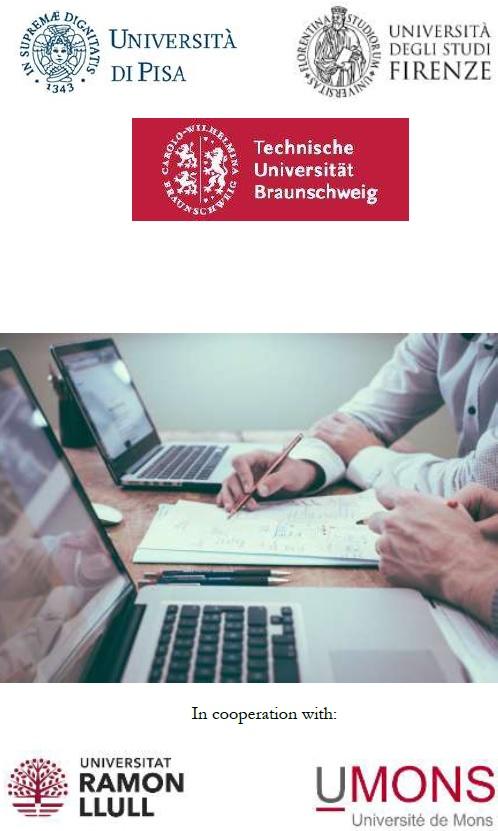19 March 2021 | Posted by Equipo Editorial de PhD
The Anthropogenic Impact on the Hydrological Cycle: Detecting and Estimating Irrigation through Remote Sensing Soil Moisture
Author: Jacopo Dari
Directors: PhD Pere Quintana Seguí, PhD. Renato Morbidelli and PhD Luca Brocca Tribunal: PhD. Renato Morbidelli; Phd. Juan José Curto; PhD. Armanda Penélope García Marín
Date: 29 th of March, 2021
Hour: 09:15 AM
Place: virtual session

Irrigation is the primary source of anthropogenic freshwater consumptions. The exploitation of water resources to improve the food production through irrigation practices is expected to further increase in the upcoming decades. In fact, the population growth and climate changes are expected to put even more pressure on the available water resources. Despite irrigation having direct implications on the rational management of water resources, as well as on food production, a detailed knowledge of where irrigation actually occurs worldwide and of how much water is actually used for irrigation practices is missing. In this research, approaches to detect and map areas where irrigation actually occurs, as well as methods to estimate the amounts of water applied for irrigation, have been developed; the proposed methodologies exploit remote sensing soil moisture. Two case studies have been considered in this research: the first one is located within the Ebro basin, in North‐eastern Spain, while the other one is the Upper Tiber basin, in central Italy. Several remotely sensed soil moisture products at different spatial resolutions have been tested to evaluate the best performing ones in detecting irrigation signals and thus mapping irrigated areas. In addition, quantitative estimates of the water amounts applied for irrigation have been performed.
The irrigation detection and mapping activity has been carried out over both case studies. In the Spanish one, the capability to detect irrigation of several remote sensing products has been initially assessed. The following soil moisture data sets have been evaluated: SMAP (Soil Moisture Active Passive) at 1 km and 9 km, SMOS (Soil Moisture and Ocean Salinity) at 1 km, Sentinel‐1 at 1 km, and ASCAT (Advanced SCATterometer) at 12.5 km. The 1 km versions of SMAP and SMOS are obtained through downscaling with the DISPATCH (DISaggregation based on Physical And Theoretical scale CHange) method. The detectability of irrigation by the considered products has been assessed through indices derived from the temporal stability theory here used under this new perspective. Furthermore, maps of irrigated areas have been produced through the K‐means clustering algorithm. Over the agricultural areas in the Upper Tiber basin, in Italy, a double‐ scale analysis has been carried out. In the analysis at 1 km spatial resolution, the same procedure adopted over the case study in the Ebro basin to evaluate the detectability of irrigation through remotely sensed soil moisture has been applied. The following products have been used: SMAP at 1 km, the Sentinel‐1 at 1 km version delivered by the Copernicus Global Land Service, and a plot‐scale‐born Sentinel‐1 version (produced by THEIA) aggregated at 1 km. Note that the first two products are the same used over the Spanish case study also. In this analysis, as well as in the one carried out over the study area in the Ebro basin, surface soil moisture simulated by the SURFEX‐ISBA (SURface EXternalisée ‐ Interaction Sol Biosphère Atmosphère) land surface model has been used as support. In the plot‐ scale analysis, THEIA Sentinel‐1 data aggregated at 100 m have been used to produce high‐resolution maps of irrigated areas through the K‐means clustering algorithm.
The irrigation quantification activity has been carried out over the study area in the Ebro basin only; two experiments have been performed: one exploiting SMAP at 1 km data and another one exploiting SMOS at 1 km data. Both data sets have been used to force the SM2RAIN algorithm adapted to estimate irrigation. A more realistic modeling of the evapotranspiration term has been implemented into the algorithm to properly reproduce the crop evapotranspiration according to the FAO (Food and Agriculture Organization) model.
The analyses carried out are aimed at filling the existing gaps in the irrigation‐ related research field; the obtained results are useful to assess the impact of irrigation practices on the hydrological cycle.
KEYWORDS: Irrigation Mapping, Irrigation Estimates, Remote Sensing, Soil Moisture, Land Surface Modeling.